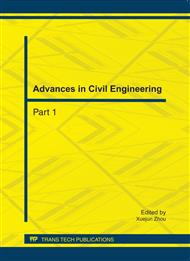p.3173
p.3180
p.3186
p.3193
p.3199
p.3206
p.3214
p.3218
p.3222
Research on the Controlling of Typhoon Engineering
Abstract:
The means of inflicting hot or cold interfere at the key place of typhoon was put forward to alter the locomotive route of the typhoon to avoid the important engineering and important region, or to weaken the intensity of the typhoon and to prevent the occurring of the typhoon at source. The basic principle and the academic foundation of the controlling of the typhoon were studied, and the model of typhoon configuration and the inherent relation between the parameters such as wind speed, wind pressure, temperature and etc were brought forward. The research trend of the typhoon controlling was introduced and the existing problems and the prospects were discussed.
Info:
Periodical:
Pages:
3199-3205
Citation:
Online since:
September 2011
Authors:
Keywords:
Price:
Сopyright:
© 2011 Trans Tech Publications Ltd. All Rights Reserved
Share:
Citation:


